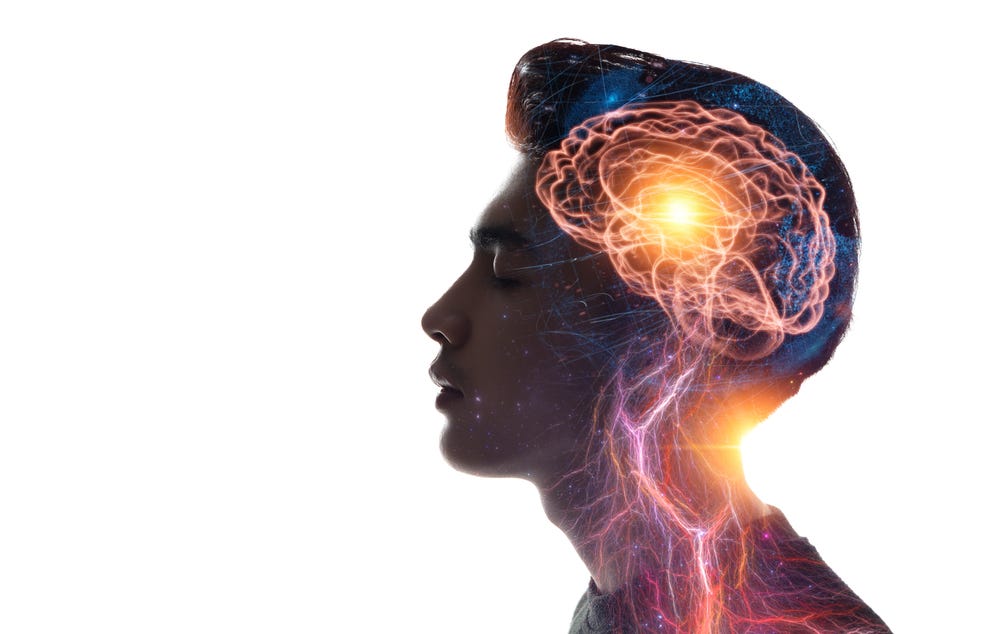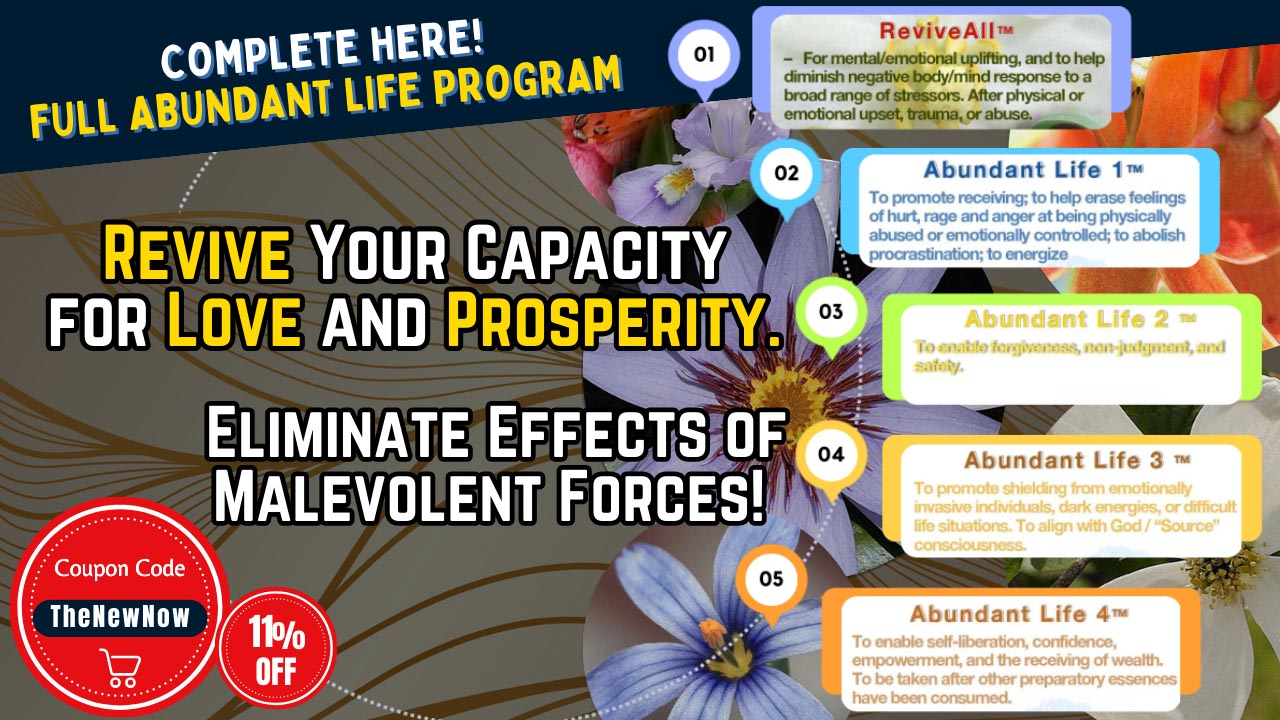What Impact Do Our Intentions Have On Reality?
The brain is not the origin of consciousness, and this has major implications on our everyday life.
by Joe Martino
Many people feel that our world is in chaos. It feels upside down and incoherent. Crisis after crisis ensues, wars, financial problems, political tensions, polarity, unethical tech, surveillance, division, loss of trust in institutions, and the list goes on.
I’ve long discussed this occurrence as part of a shift in consciousness. A rolling set of events that allow us the opportunity to wake up if we choose to slow down and look closely.
Humanity is going through an evolution or awakening of sorts, and within that process comes the death of an old paradigm so something new can emerge. These days, aspects of this idea are often referred to as the Meta-Crisis. Or if you are the World Economic Forum (WEF), you call it the Polycrisis.
Don’t run away. Just because elitists have once again hijacked a meaningful observation within our society to push their agendas, it doesn’t mean the observation itself is ‘evil’. In fact, the reality of the meta-crisis is inescapable, and it’s up to each of us to become part of shaping a new future. We either take the reigns, or we let it happen to us via the WEF.
In my 15 years of interdisciplinary work studying and conveying ideas around transformation, consciousness and their impact on society, one debate has arisen consistently. What impact do our thoughts have on reality?
To explore this I will present science, how this idea became oversimplified, and will offer some real world implications. In part 2 of this essay, releasing Tuesday, Jan 9, I’ll lay out my ideas on other governing factors involved when it comes to our consciousness and material world.
The Science
Over the last 15 years, we’ve written hundreds of articles exploring the science of consciousness on Collective Evolution. There is so much data to support the idea that consciousness is likely the fabric of our entire reality, that it’s hard to continue to accept the materialist paradigm as it stands.
That paradigm of course states that the brain is the source of consciousness, and when the brain dies, that’s it. That paradigm leads to a rather random and chaotic view of reality. Nothing happens for a purpose, it just happens. While it can be comforting to want to believe in a paradigm that says we go on after death and that life has a purpose, bringing about the potential for bias, it’s also important to not ignore the overwhelming amount of science that supports the idea. Simply: just because it’s comfortable to believe in purpose, doesn’t mean the science isn’t supporting that reality.
Whether it’s the quantum mechanics and psi experiments, the reality of remote viewing that was exhaustively studied by the US gov’t, evidence for precognition via The HeartMath Institute, the direct evidence of human thought affecting random number generators, or any of the other hundreds of studies supporting the fact that consciousness is non-local, the evidence points to the fact that the current materialist paradigm is not complete. Space has to be made to refine science and our understanding of reality. (We published a nice summary back in 2014.)
To dive into one of these examples more deeply let’s look at Princeton’s PEAR lab studies with random number generators (RNGs) and human intention.
From an article I wrote on CE in 2013 (republished in The Pulse):
A project that initially started when a student was curious to study the effects of the human mind and intention on the surrounding environment, turned into a rigorous testing lab where Dr. Robert Jahn and his lab assistant spent many hours experimenting to determine whether or not the mind has an effect on our physical world.
Dr. Jahn and his assistant were able to determine that the human minds interactions with the machines demonstrated a relationship that was not physical in nature. The mind was able to affect and change outcomes of the machine in ways that were beyond standard deviations. In essence, consciousness was having an effect on the physical world.
As the research group states:
“Our purpose is to examine subtle correlations that may reflect the presence and activity of consciousness in the world. We hypothesize that there will be structure in what should be random data, associated with major global events that engage our minds and hearts.”
To determine the effects of the mind’s intention on the physical world, they built several machines called a random number generator (RNGs). The machine would essentially mimic a coin flip and record the results over time. The machine performed 200 flips per second and produced an average mean of 100 as one would expect.
Left unattended, the machine would continue to produce results that suggested a 50/50 chance of producing either heads or tails. The interesting results came when human intention started to interact with the machine.
What was once a random 50/50 chance of producing heads or tails began to deviate from expectation as humans were sintructed to intend for the numbers to be higher or lower.
While the effects of the mind over the machines was not large, it was enough that contemporary physics is unable to explain what exactly was happening. Hence the need to refine our model of material reality. In the materialist paradigm, what this science shows is impossible.
RNGs also responded differently with large scale collective events like presidential inaugurations, tsunamis, the deaths of public figures and famously, 9/11. Peaks of order are commonly recorded during these moments of shared attention and emotions.
The implications of this research on humanity is fascinating given it could reach into the realms of creating a world of peace, a thriving world and abundance. If intentions and thoughts can impact something the way it has been demonstrated above, why not explore the boundaries of how far this can go?
It is my feeling and understanding that we impact our reality with our intentions and state of consciousness, and I feel science is starting to confirm this.
To summarize, many studies have shown our current understanding of physics and the materialist paradigm is not complete. These anomalies have to be accounted for and it is more likely than not that consciousness does not originate in the brain but is the fabric of our reality.
Perhaps not surprisingly, skeptics have largely ignored the rigor involved in all of this research, holding dearly to the materialist paradigm as it stands today. The materialist paradigm has indeed brought us much in terms of value, but are we really to pretend we aren’t going to continue to learn more?
Why are staunch skeptics so hell-bent on crushing these new theories when they show promise? What is the addiction to a nihilistic and meaningless world proposed by the materialist worldview? This I’ve never been able to understand.
That said, what are the implications of this new post-material paradigm when it comes to everyday life?
Everyday Implications
As someone passionate about the intersection of individual transformation (consciousness included) and the state of our world, I’ve come to my fluid stances on what I think is going on. This has of course guided the work I’ve done over the last 15 years.
Many can sense that there is great suffering happening on our planet, and to some extent, there is a shared collective feeling that we are fed up with it. Not just from the standpoint of being tired of seeing endless suffering, but because fundamentally we sense and feel something else is possible, and that knowing is poking through and acting as an evolutionary pressure.
To create meaningful change in our world I believe we must examine the nature of our reality and the worldviews that drive the creation of our society. If the post-materialist paradigm indeed states consciousness is the fabric and we are all connected, could this change the way we see one another? If we fundamentally knew and accepted that we were all actually connected, would we truly be as violent and dominant towards one another? Or would cooperation and love emerge much more easily?
This can be a hard question to answer when most of what is available in our conscious mind to provide an answer is the materialist paradigm or religious belief, and the culture that has been created from both. To sense a new worldview and what society might be created from it is a bit more subtle, something often sensed through meditation, contemplation or embodiment practices. Psychedelics too.
As we explore the implications of this new worldview I want to point to five ideas. Remember, we have to explore the question of “how much our thoughts and intentions truly impact our reality.”
- Let’s get this one out of the way: on one hand our thoughts can impact our emotions, and our emotions impact our nervous system, and that can then change the lens through which we see the world and the choices we make. I believe all this to be true and have studied it extensively over the last 15 years. But you’ll notice this is less about the quantum and more about the relationship between our mental, emotional and physical bodies. Does it translate to the quantum in a big way? We don’t know.On the other hand, people will say that by thinking or believing something we are manifesting it. That our thoughts impact the quantum and create what happens around us. People may then become fearful of what they are thinking or reading because they believe it’s reinforcing what they don’t want. They often go on policing speech, suggesting that anything that sounds ‘negative’ is reinforcing the old or bad patterns.Perhaps this is partly true, but I believe this idea is misunderstood. Further, embodied intentions and thoughts are two different things. It’s this piece I want to offer thoughts on especially as it has to do with the science.
- Emerging scientific evidence supports what many ancient teachings have laid out: there is a unified field of consciousness that connects all of us and all things. We are one in that sense.
- Further, it tells us that our consciousness, individual and collective, has some effect on our reality. Even if the effects are very small, this upends our materialist paradigm and we must refine our scientific view of reality and the worldviews built from it.
- This of course invites the popular idea that if we just change our thoughts we will change reality. As mentioned, this is partly true but I believe it’s misunderstood and oversimplified. The pathway to manifest on a global social scale is very complex as it touches many layers of co-creation. Understanding what might add complexity to our consciousness’ impact is important. (I explore this more in part 2 of this essay coming next week. Subscribe to not miss it)
To expand upon #4, remember that effect sizes are often small when it comes to consciousness impacting reality. Why? To me, I think this has to do with two things: (1) the fact that our reality is designed to be experienced physically, (2) the complexity of how material things are created in our reality
1. When it comes to the physical part, I believe that to some extent the dense, 3D, material matter we play with daily is the video game. It’s the stuff we came to feel and play with.
Imagine trying to play a video game that is only 1’s and 0’s and doesn’t have a graphical interface with sound, levels, and story: it’s boring and rather unplayable.
In a similar sense, although consciousness may be the fabric of our reality, and quantum experiments suggest an ‘all possible’ world sits within it, I do believe we are here to experience the physical video game and not the ‘god-like’ mode of entirely ‘all possible.’
That doesn’t mean we can’t expand our possibility beyond what we experience today, it means it’s important to consider the mystery and potential utility of small effect sizes.
After all, why would we incarnate into human bodies with limitations if there wasn’t a point to the limitation? (More on this in part 2 of this essay coming next week.)
2. On the side of manifestation complexity, when we think about something like manifesting a house, there is a lot involved in that. Is the house built? Are the materials available? Is the land available? How would you get it? Who will build it all? Who will give up the house? How might you get the money for it? etc.
I’m not saying this to shoot down the idea of manifesting a house, I’m saying it to point out that in our physical world how things come to be is complex. Our reality is shared amongst one another and what we choose to manifest inevitably has to impact other people and beings.
Thus, the basic idea that consciousness and thoughts create our reality bumps up against the existing complexity of how we live within our reality. It can be hard to manifest things that don’t exist or aren’t available, no matter how hard we try. It can be hard to use our thoughts to redesign a whole society when there are so many minds and physical things to support it. It’s complex, therefore effect sizes might be small as complexity scales.
If our conscious manifestation is held back by the complexity of scale and the grandness of society, it stands to reason that we either have to get most of us on the EXACT same page manifesting something, or we must bring our physical actions into the picture.
I feel Dean Radin, PhD, Chief Scientist at The Institute of Noetic Sciences put it well when he said:
“If you have a large pond and you want to get all of the water out of the pond, you could take a rock and throw it into the pond and a little water would be pushed out as a result. So you might think, well, I’ll just get 1,000 friends and we’ll all throw rocks into the pond and it will make all the water spill out. Well, that probably won’t happen. The reason is that unless you throw the rocks in at exactly the same time and at exactly the right configuration, you won’t end up with one giant wave. Instead, you will end up with just a very disturbed surface of a pond because all the waves are interfering with each other. In the same token, if you have one person thinking about peace, that probably does affect the whole world, a little bit. But if you have 100 people thinking about the same thing, then you won’t get 100 times more intention. You may end up with zero intention because the waves cancel each other out.”
This idea suggests the need for greater coherence, something attained when parts involved in a whole are communicating well with one another. In the case of human beings playing a physical game of creating the society around them, we must realize our coherence is gained through communication and shared realities.
Our ideas matter and how we make sense of our reality together matters. To think we are just going to “wish” a new world into existence is a nice thought, and consciousness certainly plays a role in what is and what we believe is possible, but there is an element of living this complex physical experience that seems to govern this “all possibility.”
This is why we see very strong, obvious and measurable results when we examine the interplay between our thoughts, emotions, and physical body, but we see small effects looking at how consciousness tries to move foundational aspects of our physical reality.
Again, I’m not saying this to shoot down the possibility of consciousness creating reality. I’m suggesting that by not acknowledging the need to ‘play the game too,’ we’re disempowering our ability to create change. We end up waiting for a vision to unfold, for our consciousness to just change everything, instead of being the change agent who not only holds a vision for a future but who is actively creating it with their peers on the physical plane.
To many the ideas I share might seem obvious, but I’ve come across large numbers of people in my day who honestly and truly believe we need to do nothing except imagine the world we want and it will manifest.
Thanks for reading my ramblings. I will expand on these ideas in part 2 of this which will be released on Tuesday, Jan 9th. I’ll share more on why I think effect sizes are small, how thoughts do and don’t create reality, and what other influential factors might ‘govern’ how our thoughts impact reality.
Related Article: https://newagora.ca/most-major-threats-these-days-are-based-on-lies-by-the-pulse/






















